Jack Hamilton
Full Member
- Joined
- Apr 13, 2009
- Messages
- 186
- Reaction score
- 22
- Golden Thread
- 0
- Location
- Murrieta Ca
- Detector(s) used
- Tesoro Silver Sabre, Tesoro Lobo Super Traq
I'm not sure about where to post this thread, and because of a request I will post it here so it will be easy to find for other prospectors who like to build their own gear. I noticed "member submitted how to's" but could't find a DIY thread,So without and further doo doo  My home made sheet metal brake.
My home made sheet metal brake.
Parts: you will need 3 pieces of 1/4" thick by min. 2" angle iron cut to exceed the length of the metal you wanna bend.
1 piano hinge. A box of steel rivets, 1/8" to 3/16" should work for 36" bends and under. One flat piece of steel bar 1-1/2"n by 3 feet. Keep in mind this is my "first" brake and it can definitely be improved on, and I already have plans to do so. One neccesity is to add triangle wedges welded in place to beef up the angle iron. Believe it or not, thin sheet aluminum exerts enough force to bend angle iron. This gives you a slight curve in your fold. No bueno!
I have 1 piece of angle that sits with an edge on my work bench surface and face. One piec of angle on top of that, thin edge forward, tall edge in the back. One piece of angle riveted to the bottom angle via piano hinge, in reverse position, bwith a handle bolted to it. I have drilled through both pieces of angle on the work bench, and the work bench, with a 3/8" drill bit. 2 bolts go from the top piece of angle, through the bottom piece and through the bench and get washers and a nut below the work bench. Since pictures are worth a thousand words, I took quite a few pics........Most of this stuff can be bought at lowes or depot. Its alot cheaper at a recylce center
Parts: you will need 3 pieces of 1/4" thick by min. 2" angle iron cut to exceed the length of the metal you wanna bend.
1 piano hinge. A box of steel rivets, 1/8" to 3/16" should work for 36" bends and under. One flat piece of steel bar 1-1/2"n by 3 feet. Keep in mind this is my "first" brake and it can definitely be improved on, and I already have plans to do so. One neccesity is to add triangle wedges welded in place to beef up the angle iron. Believe it or not, thin sheet aluminum exerts enough force to bend angle iron. This gives you a slight curve in your fold. No bueno!
I have 1 piece of angle that sits with an edge on my work bench surface and face. One piec of angle on top of that, thin edge forward, tall edge in the back. One piece of angle riveted to the bottom angle via piano hinge, in reverse position, bwith a handle bolted to it. I have drilled through both pieces of angle on the work bench, and the work bench, with a 3/8" drill bit. 2 bolts go from the top piece of angle, through the bottom piece and through the bench and get washers and a nut below the work bench. Since pictures are worth a thousand words, I took quite a few pics........Most of this stuff can be bought at lowes or depot. Its alot cheaper at a recylce center

Attachments
Upvote
0



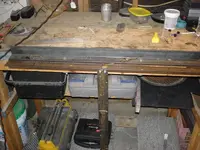
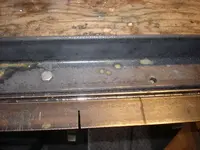
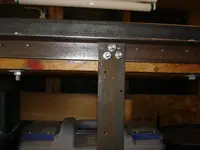
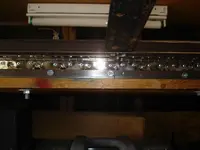
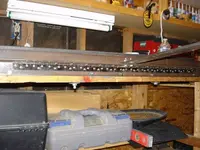
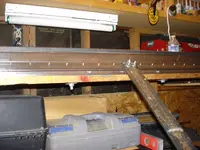
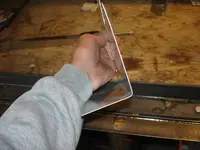
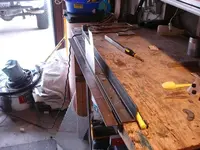

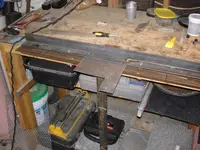
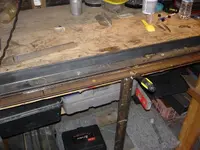
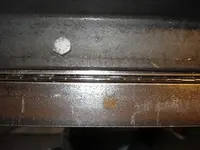
 Fly out here and I'll take you to some places not many know about. Under the radar and not on the geocommunicator, not even as closed claims. I find gold all over. Most of it is fines though. I need to get up to nor cal, randsburg or Arizona. I want some more nuggets to add to my collection
Fly out here and I'll take you to some places not many know about. Under the radar and not on the geocommunicator, not even as closed claims. I find gold all over. Most of it is fines though. I need to get up to nor cal, randsburg or Arizona. I want some more nuggets to add to my collection 
 My longest bend on my brake is 36" I
My longest bend on my brake is 36" I


